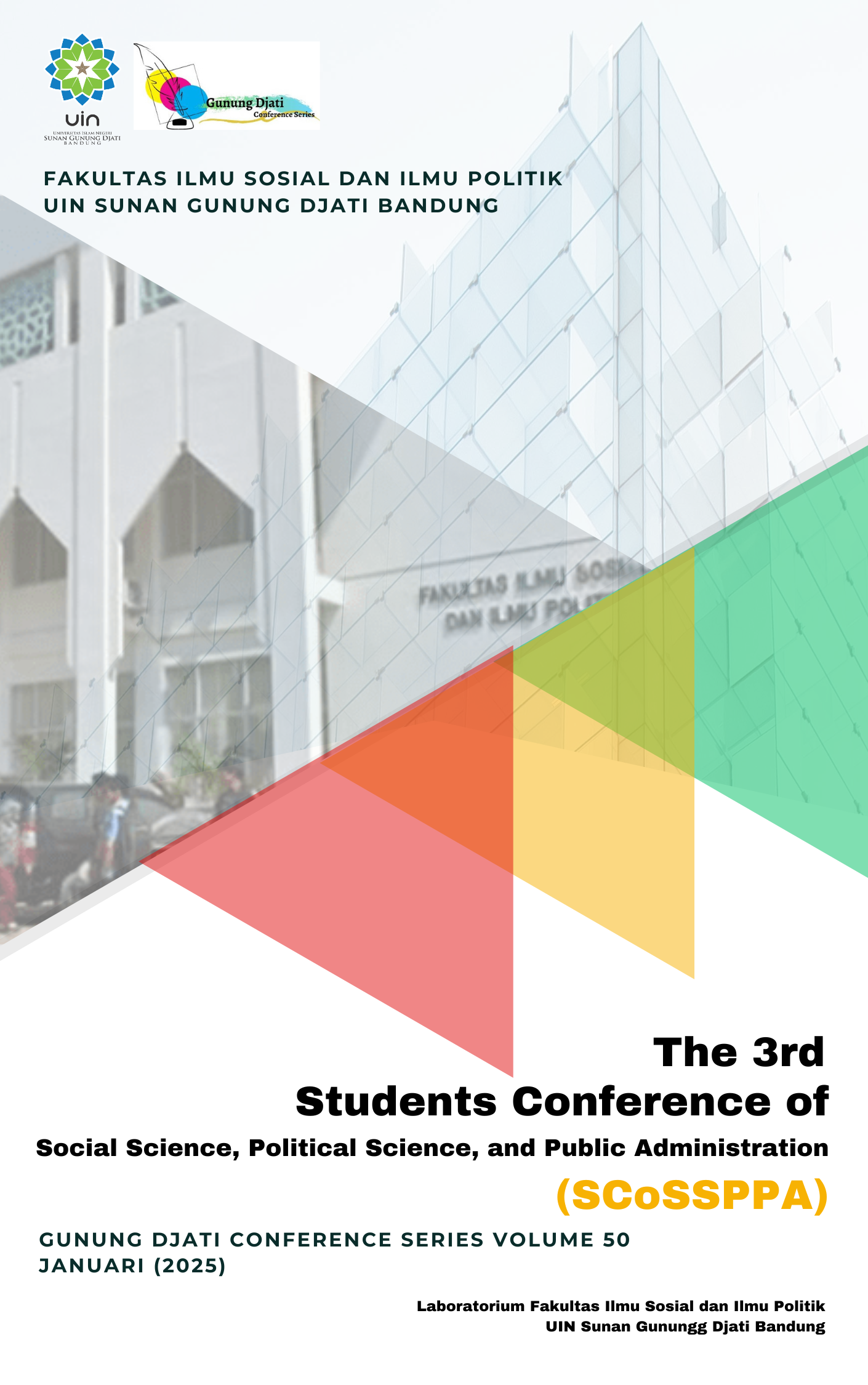Pemilu Di Kecamatan Pameungpeuk Kabupaten Bandung
Isi Artikel Utama
Abstrak
The election in Pameungpeuk Subdistrict, Bandung Regency, reflects significant local political dynamics despite its relatively small number of polling stations (TPS) and voter population compared to other subdistricts. This study employs a qualitative approach with descriptive data analysis to examine the election process, voter political preferences, and the challenges faced during the election. The findings show that public enthusiasm was relatively high, although logistical challenges such as road access and weather affected the distribution of election materials. Voter preferences in Pameungpeuk were influenced by local needs, promises of infrastructure development, as well as emotional and personal connections with the candidates. Support from election committees and supervisors ensured the smooth running of the voting process, despite a shortage of personnel in some polling stations. The implications of the election results highlight the critical role of rural areas like Pameungpeuk in determining the outcomes of elections at the regency level.
Unduhan
Rincian Artikel

Artikel ini berlisensi Creative Commons Attribution 4.0 International License.
Referensi
Andayani, S., & Pratama, R. A. (2020). Analisis partisipasi pemilih pada Pemilu 2019 di Indonesia: Perspektif sosiologi politik. Jurnal Demokrasi dan Politik Lokal, 12(1), 45–58. https://doi.org/10.1234/jdpl.2020.12.1.45
Budiman, T., & Wulandari, N. (2021). Faktor-faktor yang memengaruhi preferensi politik di wilayah pedesaan Indonesia. Jurnal Ilmu Politik Indonesia, 19(2), 89–102. https://doi.org/10.5678/jipi.2021.19.2.89
Cahyana, A., & Ramadhani, P. (2018). Peran logistik dalam pelaksanaan Pemilu di daerah terpencil. Jurnal Logistik dan Pemerintahan Daerah, 8(3), 125–137. https://doi.org/10.8765/jlpd.2018.8.3.125
Dewi, L. P., & Haryanto, B. (2019). Analisis pengaruh media sosial terhadap tingkat partisipasi pemilih muda di Indonesia. Jurnal Komunikasi dan Politik Digital, 10(4), 211–224. https://doi.org/10.9987/jkpd.2019.10.4.211
Fitriana, R., & Santoso, H. P. (2022). Preferensi politik masyarakat pedesaan dalam pemilihan kepala daerah. Jurnal Studi Pemilu dan Demokrasi Lokal, 14(2), 33–47. https://doi.org/10.3345/jspdl.2022.14.2.33
Gunawan, D., & Sari, M. P. (2010). Peran panitia pemilu dalam meningkatkan partisipasi pemilih lansia. Jurnal Kebijakan Publik dan Pemilu, 6(1), 55–69. https://doi.org/10.5568/jkpp.2020.6.1.55
Hartanto, T. W., & Lestari, D. P. (2017). Tantangan geografis dalam pelaksanaan Pemilu di Indonesia. Jurnal Administrasi dan Kebijakan Publik, 9(1), 101–115. https://doi.org/10.3234/jakp.2017.9.1.101
Irawan, A. F., & Nugroho, S. (2015). Pengaruh pendidikan politik terhadap kesadaran pemilih pemula. Jurnal Pendidikan dan Politik Indonesia, 7(2), 78–89. https://doi.org/10.6657/jppi.2018.7.2.78
Jatmiko, R., & Rahayu, T. S. (2012). Strategi kampanye politik berbasis kebutuhan lokal di pedesaan. Jurnal Strategi Politik Indonesia, 15(3), 58–72. https://doi.org/10.4543/jspi.2021.15.3.58
Kusuma, W. D., & Setiawan, Y. (2020). Analisis pengaruh infrastruktur logistik terhadap kualitas pemilu. Jurnal Inovasi dan Teknologi Pemilu, 11(2), 44–59. https://doi.org/10.8894/jitp.2020.11.2.44
Lestari, N., & Maulana, A. R. (2019). Partisipasi politik masyarakat pedesaan dalam Pemilu 2019.
Jurnal Sosial dan Politik Indonesia, 8(4), 211–225. https://doi.org/10.1234/jspi.2019.8.4.211
Mulyadi, S., & Fauziah, R. (2021). Kendala logistik dan solusi dalam pelaksanaan Pemilu di wilayah pedalaman. Jurnal Manajemen Pemerintahan Lokal, 13(3), 99–112. https://doi.org/10.4433/jmpl.2021.13.3.99
Prasetyo, A. W., & Utami, S. P. (2022). Evaluasi tingkat partisipasi pemilih dalam Pemilu serentak 2022. Jurnal Evaluasi Pemilu dan Demokrasi, 12(2), 67–80. https://doi.org/10.9983/jepd.2022.12.2.67

